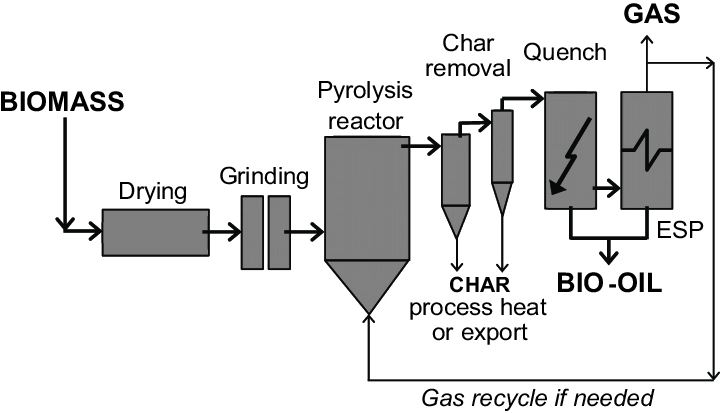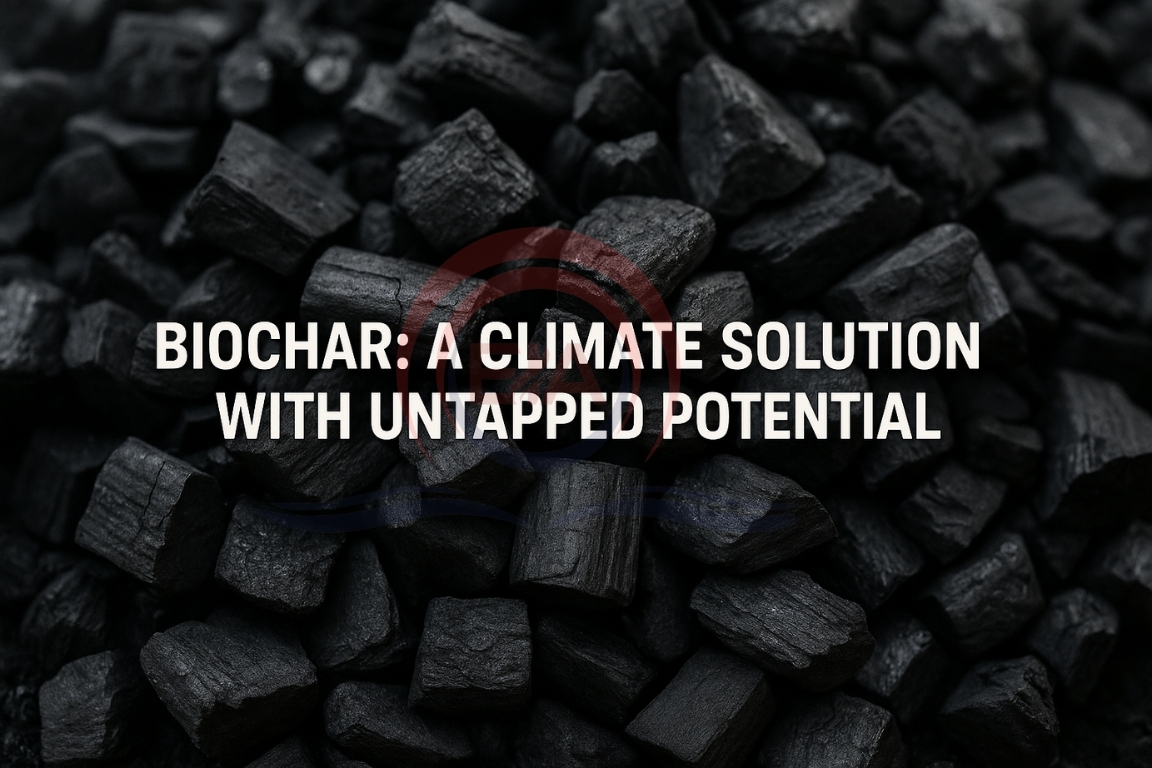With India preparing to launch its carbon market by 2026, biochar is gaining attention as a low-cost, nature-based carbon removal solution. It has the potential to manage agricultural and urban waste, reduce emissions, and generate additional energy.
What is Biochar?
- Biochar is a carbon-rich solid material made from biomass like crop residue and organic waste through pyrolysis (burning in low-oxygen conditions).
- It serves multiple purposes: waste management, carbon sequestration, soil improvement, and energy generation.
India’s Waste Potential for Biochar Production
- India produces over: 600 million tonnes of crop residue. 60 million tonnes of municipal solid waste yearly.
- If 30-50% of this waste is converted into biochar, India could produce 15–26 million tonnes of biochar, removing 0.1 gigatonnes of CO₂-equivalent annually.

Byproducts and Energy Potential
- Biochar production yields syngas and bio-oil: Syngas (20–30 million tonnes) can produce 8–13 TWh of electricity, replacing 0.4–0.7 million tonnes of coal.
- Bio-oil (24–40 million tonnes) can replace 12–19 million tonnes of diesel or kerosene, cutting oil imports and reducing fossil fuel emissions by over 2%.
Sector-wise Benefits of Biochar
- Agriculture: Enhances soil fertility and water retention, especially in dry areas. Cuts nitrous oxide emissions by 30–50%, a gas far more harmful than CO₂. Reduces fertilizer need (by 10–20%) and improves crop yield (by 10–25%).
- Construction: Mixed in small amounts with concrete (2–5%), it: Increases strength and heat resistance. Locks 115 kg of CO₂ per m³, making buildings carbon sinks.
- Carbon Capture: Modified biochar can capture CO₂ from factory emissions, though current efficiency is lower than industrial technologies.
Wastewater Treatment
- A low-cost method to treat sewage and industrial water.
- 1 kg of biochar can treat 200–500 litres of water.
- India’s untreated wastewater can create a demand for 2.5–6.3 million tonnes of biochar.
Challenges to Adoption
- Lack of standardisation in raw materials and carbon accounting systems.
- Weak policy support and insufficient investment models.
- Poor awareness and coordination across sectors like energy, agriculture, and environment.
- Weak monitoring, reporting, and verification (MRV) systems.
Way Forward for Large-scale Adoption
- Promote R&D for region-specific feedstock and usage guidelines.
- Integrate biochar into: Crop residue schemes, bioenergy plans, and state climate strategies.
- Recognise biochar under the Indian carbon market to allow carbon credit trading.
- Support village-level production units, which can generate over 5 lakh rural jobs.
Conclusion:
Biochar is a multi-benefit solution for India’s environmental, energy, and rural development goals. Though not a single solution to climate change, it offers a practical, science-backed tool that needs stronger institutional and market support.





